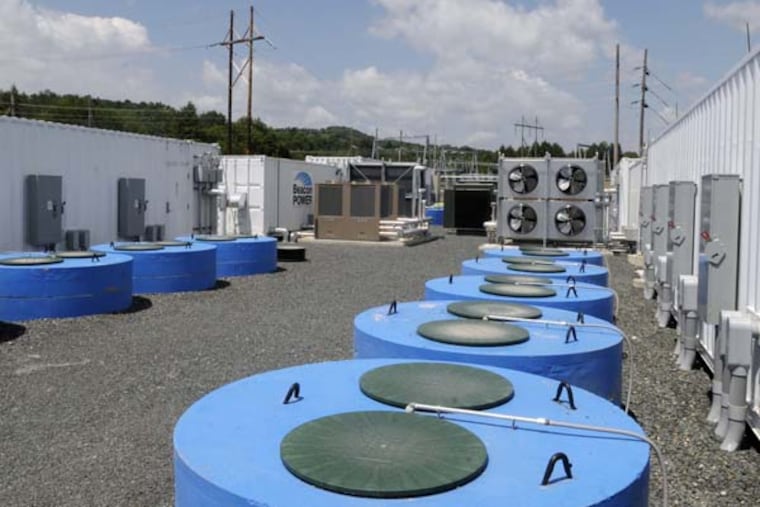Plant in N.E. Pa. will store power in flywheels
An innovative energy-storage company back from bankruptcy is building a plant in Northeastern Pennsylvania to store electrical power in speedy spinning flywheels.

An innovative energy-storage company back from bankruptcy is building a plant in Northeastern Pennsylvania to store electrical power in speedy spinning flywheels.
Beacon Power L.L.C. on Friday will install the first of 200 flywheels in a nondescript industrial park near Hazleton. The $53 million storage system is capable of discharging 20 megawatts of electricity into the grid at a moment's notice - the equivalent of a burst of energy from a small power plant.
Flywheels have been used for storing energy for a long time - think of a potter's wheel. But only in recent years have high-tech utility-scale systems been deployed.
Flywheel storage systems are designed to smooth out the peaks and valleys in the power system to help grid operators meet fluctuating demand. That important "frequency regulation" service conducted in the background is typically done by small gas-fired generators.
But nimble storage systems like flywheels or battery arrays are becoming increasingly important as more variable power sources such as wind and solar come on line.
The Beacon flywheels can reach peak output in under one second. More accurate and rapid response improves efficiency on the grid, which lowers costs to consumers, who ultimately pay for the service through rates.
"The newer technologies can respond much faster than a generator," said Ray E. Dotter, spokesman for PJM Interconnection, the regional grid operator.
The flywheel itself is a one-ton cylindrical carbon-and-glass composite rim about seven feet tall and four feet in diameter. It spins on a rotor up to 16,000 r.p.m. on magnetic bearings in a vacuum chamber to reduce friction. The flywheels are manufactured in Tyngsboro, Mass.
The devices are buried to contain damage if a flywheel fails and disintegrates.
Beacon opened its first plant in Stephentown, N.Y., in 2011. Pennsylvania gave the company a $5 million grant the same year to open the Hazle Township facility. But the company declared bankruptcy after electricity prices fell, reducing its prospective income.
Beacon had borrowed $39 million under a U.S. Department of Energy stimulus-loan guarantee and got swept up in the political fallout surrounding Solyndra Inc., a failed solar-energy firm that also received a loan from the Obama administration.
Rockland Capital, a private equity firm, took Beacon out of bankruptcy last year. Under the settlement, the Energy Department's obligation was reduced to $27 million.
Some analysts are skeptical that flywheel systems can compete with conventional power in an era of cheap energy.
"As long as rates stay low, I don't see this as viable," said Steve Minnihan, a senior analyst with Luxe Research Inc. in Boston.
But Barry Brits, Beacon's president, said that the flywheels offer "a good return on investment" and that Beacon is looking to develop new sites in the region.
at 215-854-2947, @Maykuth, or amaykuth@phillynews.com.